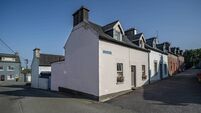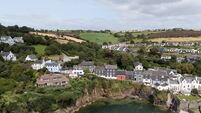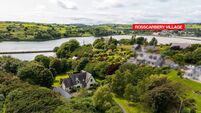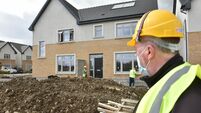A decade of property boom
MOST property market surveys look on rises on a year-to-year basis, so one looking back on a decade of growth is of particular interest. And, its findings make for startling, and stark, reading.
Over the past 10 years, house prices in the Cork region increased four and five-fold from their 1995 base, serving as a microcosm of the national house price inflation rates.
And as if that weren't bad enough, land price for building land went up ten-fold, from €125,000 an acre to a new Cork area average of €1.25 million an acre, and so the upward curve continues.
Nationally, house-building output ran at 30,000 units a year in 1995; now it averages 80,000 a year, with a steady demand for 60,000 units per annum forecast for the coming year.
Auctioneering company Irish and European has been trading for 30 years, and does regular five and 10-year property market updates.
Records from the company's archives show, that from 1995 to 2005, "in this decade the boom in Cork property prices, and indeed Irish property prices and particularly the housing market, have been the most vibrant and talked about topic in Ireland. And, despite the reservations of some, the future continues to look quite active and encouraging," says the firm's MD, Joe McCarthy.
He forecasts continued growth through 2006, and beyond, as the work force has risen from one million people 10 years ago to two million today.
"Our population could reach in excess of five million by 2020. These people will have to be housed either through the owner-occupier or the rental market. The construction industry should remain strong for years to come with on-going infrastructural investments.
"House prices and future trends are much debated. There is a difference of opinion regarding the reason for the house price growth. Some argue it is based on economic fundamentals, strong employment growth, low interest rates and other demographic developments.
"Some economists have been forecasting a collapse for almost five years now, with the result that they are neither doing justice to their own profession nor indeed to many first time buyers hoping and waiting for a collapse in house prices.
"The bottom line is that the economy is continuing to deliver real growth, driven by real needs, such as the need for people to have somewhere to live. Present indications suggest this trend will continue and the housing market looks set to stay buoyant," he states in the Irish and European Decade of Boom 1995/2005 report, which will be published next week and will also be available online at www.irishandeuropean.ie.
"Some time in the future, the doomsayers who specialise in predicting the imminent onset of economic recession may be proven right. It did not happen over the past decade. It will not happen in 2006 and it is unlikely to happen for some years yet," he adds.
As Cork's house demand is increasingly being met in the satellite towns and villages outlined in the CASP strategy, Mr McCarthy argues that public services need to catch up with the pace of house building, and that public transport needs to be stepped up. Park and ride facilities and the reopening of the rail line between Midleton and Blarney are a start.
"Our city centre would benefit greatly from the early development of an accessible and speedy bus service and rail system linking the city centre to outer suburbs and satellite towns. The long-term benefit of such a system would far outweigh its short-term costs," says Mr McCarthy.
Demographic changes underpinning demand include: immigration at an all time high; the return of emigrants of the '70s and '80s, for a net inflow of 35,000 Irish people a year; 40% of the population are under the age of 25 and the largest proportion of the population is now aged between 25-40 years, an active house-buying cohort; home ownership in Ireland is the highest in Europe at 81% as against Britain at 67% and Germany at 35%; over one-third of our house buyers are single and over one third of mortgage demands are from first time buyers - the average age of first time buyers has risen from 24 to 27.
:
Knockrea Gardens, Ballinlough, €60,000/€325,000.
Briarscourt, Shanakiel, €50,000/€260,000.
Chestnut Grove, Bishopstown, €115,000/€575,000.
Chelmsford Village, Model Farm Road, €160,000/€900,000.
Kiltegan Lawn, Rochestown, €110,000/€460,000.
Homeville Terrace, Western Road, €90,000/€400,000.
Landsborough, Rochestown, €175,000/€600,000.
St Vincent's View, College Road €85,000/€360,000.
Uam Var Drive, Bishopstown, €85,000/€320,000.
Farranlea Grove, €85,000/€400,000.
Janeville, Blackrock, €175,000/€800,000.
Willowfield, Ballincollig, €60,000/€275,000.
Bromley Park, €70,000/€330,000.
Bellevue Rise, Frankfield, €95,000/€345,000.
Monswood, Rochestown, €170,000/€900,000.
Iona Hall, Wilton, €95,000/€330,000.












